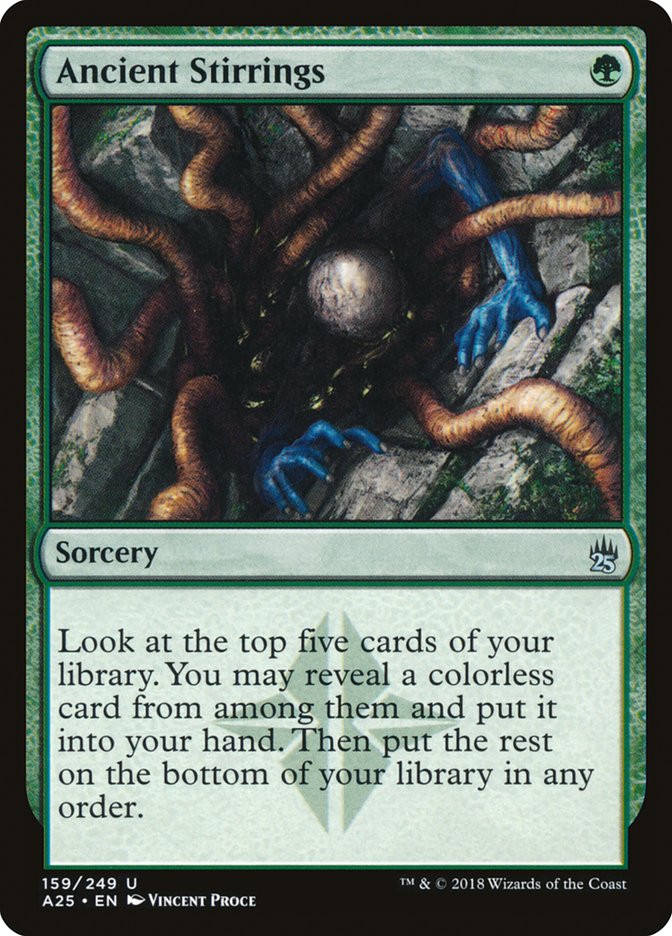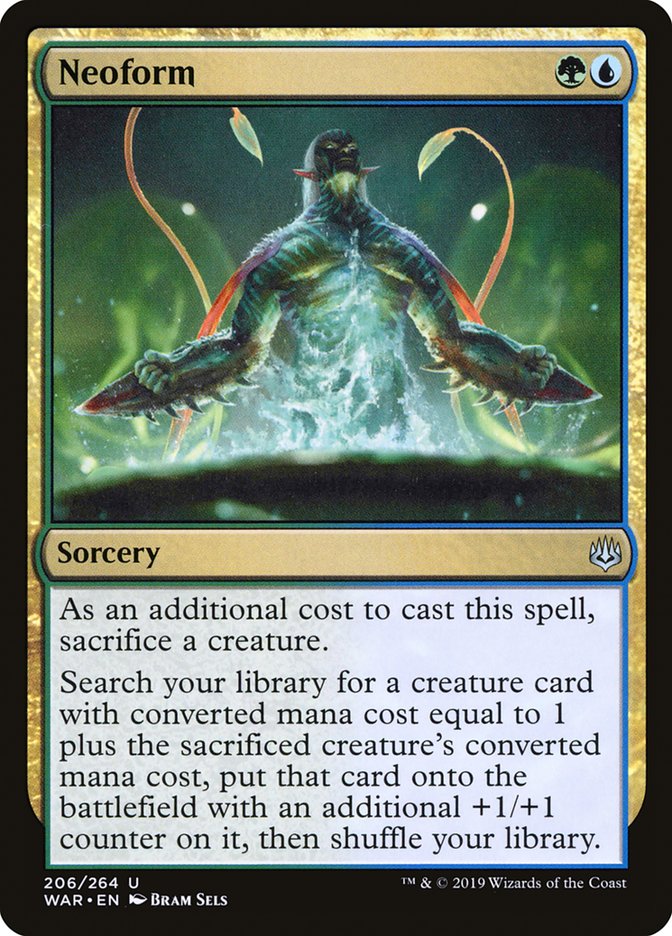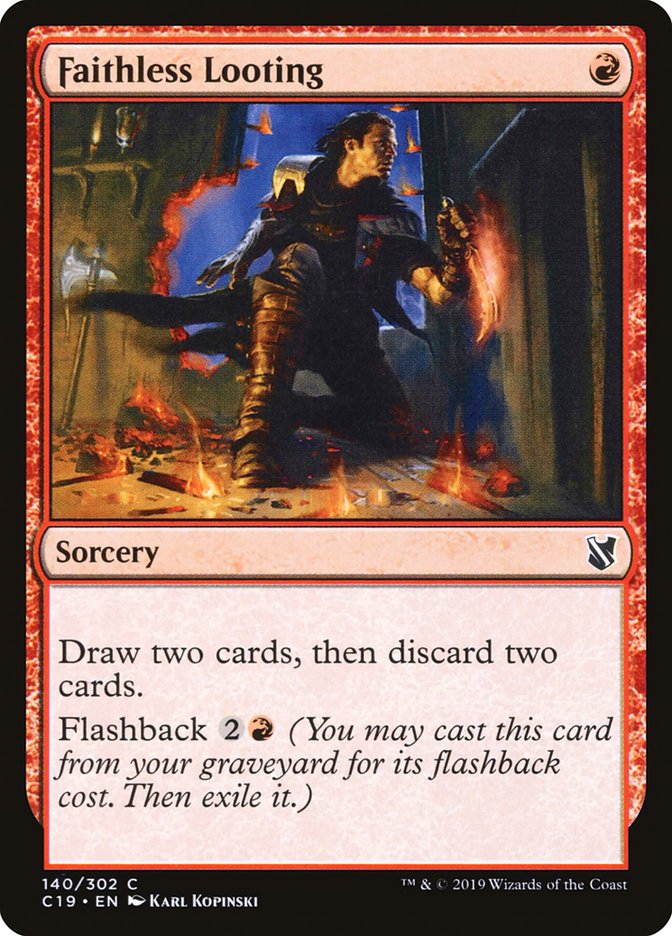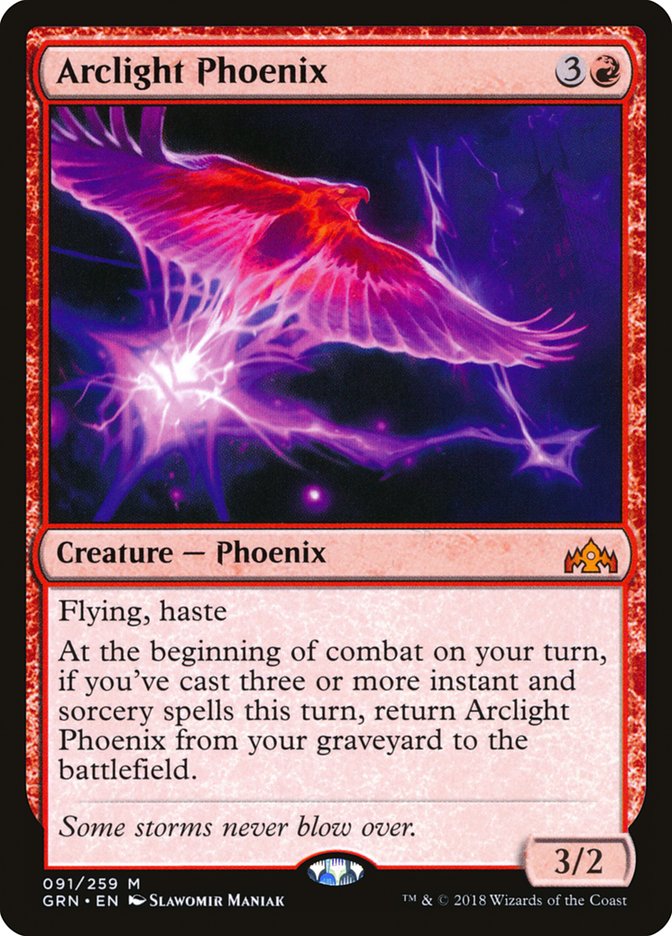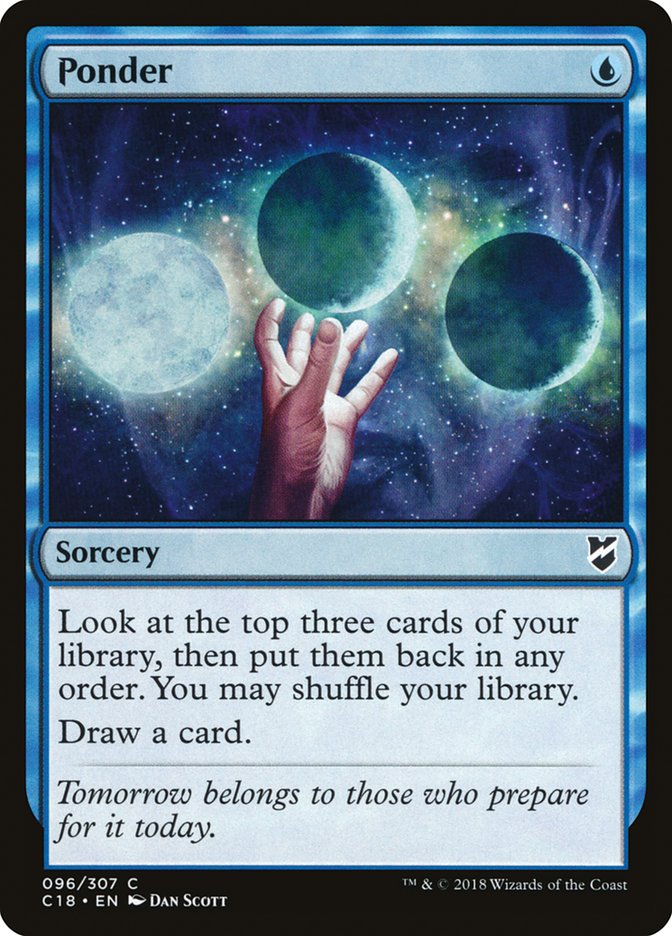Monday’s updates to Modern’s Banned List represent some of the most heavy-handed and sweeping changes we’ve seen since the format’s inception. In a format with dozens of viable decks and dozens more lurking on the fringes, understanding the implications of the smallest of changes is challenging. Dealing with what amounts to a whole new format overnight is downright overwhelming.
When holistic understanding of a format is an impossibility, I tend to focus on a set of key questions. These questions are founded on reasonable assumptions and seek to simplify the deckbuilding process. A convincing answer to any one of these questions can point us in the direction of the best post-ban option in the absence of a defined metagame. Once things settle down and a new metagame becomes clear, we can rethink deck selection in order to account for format trends at large. For now, though, the road to success at SCG Dallas depends on the answer to the following five questions.
1. Was Hogaak Covering for Urza This Whole Time?
Amid Hogaak posting some of the most ridiculous win rates we have even seen, another Modern Horizons-focused archetype was quietly trailing only slightly behind. Urza, Lord High Artificer is a messed-up Magic card just on its face, and it rejuvenated a combo that was so feared that it began the Modern format preemptively banned. Fun fact about Sword of the Meek – it’s an Equipment. And one of its best friends just got the green light into the Modern format for the first time after nearly a decade on the bench.
I’ll talk more about the fallacy that Stoneforge Mystic is going to move the format towards fairness in a bit, but it’s hard to think of a better home for the card than what may have already secretly been the best deck in the format. Urza decks pride themselves on being adaptable and playing every potential role in a game equally well. Combo, control, and aggro deck all in one, Urza seems like it has the tools to be the early frontrunner in new Modern.
The problem lies in just how obvious this conclusion is. The key piece of information we’re looking for here is “How does Urza perform when sideboards are freed from the tyranny of Hogaak?” With six to eight sideboard slots back in play for the entirety of the format, it’s a reasonable assumption that some of that real estate is destined to be claimed by artifact hate. Will Urza decks be able to succeed despite this fact? With proper deck construction, I believe the answer will prove to be yes.
Creatures (9)
Planeswalkers (3)
Lands (20)
Spells (28)

If I were playing SCG Dallas, I’d be registering something within a few cards of this list. The correct maindeck Swords are certainly up for debate, and it may be you just aren’t interested in one at all. Being able to transition cleanly to a Monastery Mentor tempo deck in the face of hate has me high on this archetype’s chances for long-term success. There are just too many angles for opponents to account for, and your card quality is completely off the charts. The deck’s biggest weakness is probably stack-based combo, but in Week 1 I’m content to make them have it. The sideboard can be adjusted once it’s proven necessary.
2. Does Ancient Stirrings Still Deserve to Be Considered a Format Pillar?
Several months back, I wrote an article suggesting that all Modern decks must play either Faithless Looting, Mox Opal, Aether Vial, or Ancient Stirrings in order to be viable. This was at a time when Lantern Control, Hardened Scales, Amulet Titan and Mono-Green Tron were all seeing more representation. During Hogaak Summer, it felt like the missing prong of this fearsome foursome was Ancient Stirrings. I don’t think this was a mistake.
Modern Horizons left a pretty incredible bounty of riches for many of the format’s top decks, but Ancient Stirrings-based decks incurred far more losses than gains. Cards like Force of Vigor and Collector Ouphe slotted in some of the aforementioned strategies but were more effectively deployed as countermeasures for Lantern of Insight and various Stars and Spheres. Was the limiting factor on these decks the raw power of Hogaak, or have the winds of change left Stirrings-based strategies behind?
I think much of this answer again depends on whether people accept the premise that now is the time to play fair (and again, more on this later). If people are content to focus the first three turns of the game on Stoneforge Mystic, then making a Turn 3 Karn Liberated or a Turn 2 Primeval Titan will regain a lot of its luster. Karn, Ulamog, and Oblivion Stone should also get points for their ability to beat players who have gained infinite life via Thopter / Sword. If the metagame moves in a way where you can punish a lack of meaningful activity on early turns, these decks are ready to be a problem once more.
3. Do We Really Know How Good Neobrand Is?
A few months ago, I shared my thoughts following Neobrand testing.
Have spent a lot of time playing the Neoform deck over the past few days and I’m sad to report a win-rate below 50%.
I’m doubly sad because I’ve been goldfishing.
— Bryan Gottlieb (@BryanGo) May 28, 2019
A little tongue-in-cheek on my part, but data seemed to back up my perceptions. Neobrand was simply too inconsistent to post reasonable win-rates. A few people didn’t buy into this interpretation, though, chief among them Jonathan Zhang.
Creatures (18)
- 2 Autochthon Wurm
- 1 Wild Cantor
- 4 Allosaurus Rider
- 4 Simian Spirit Guide
- 4 Chancellor of the Tangle
- 1 Laboratory Maniac
- 2 Griselbrand
Lands (14)
Spells (28)

Jonathan was in prime position for a Top 8 in late rounds at GP Las Vegas last weekend and came up just a bit short. Far more interesting than this one-off performance, though, are Jonathan’s long-term, meticulously tracked results. He posts eyebrow-raising numbers on his Twitter feed and has unquestionably cemented himself as the master of an archetype that most of us wrote off long ago. So are we just supposed to be ending games on Turn 1? Was it a mistake to leave Neobrand untouched?
Given the expected prevalence of Azorius Control in a post-Stoneforge Mystic era, the answer likely remains no. Path to Exile and Force of Negation are extremely problematic cards for the archetype and I’d expect them to show up in spades. If, for some reason, Stoneforge-based decks don’t pan out, I think we all owe it to ourselves to give Neobrand a second look as the most broken thing you can possibly do in Modern.
4. Do the Faithless Looting Decks Have Reasonable Replacements?
We just went through a banning in Bridge from Below that may have powered up the archetype it intended to hit. There’s certainly a level of due diligence that we’re required to do before we can write off the archetypes that lost Faithless Looting. In the case of something like Dredge, replacements are honestly ample. Sure, there’s a cost to be paid for losing access to Faithless Looting, but if that cost comes at the same time as a dramatic reduction in graveyard hate, it’s likely Dredge pilots will be pleased. Hedron Crab, Insolate Neonate, and others are ready to come to bat. Ignore them at your peril.
On the side of the Arclight Phoenix decks, I think Izzet builds have been struck a fatal blow. Without the ability to clear Arclight Phoenix from hand while simultaneously upping spell count, the deck has lost all consistency. On the topic of Mono-Red Phoenix, Ryan Overturf has already called into question the efficacy of even playing Arclight Phoenix in the first place. His Mono-Red Prowess deck represents the clearest path forward for decks of this vein in a world without Looting. The deck has a true hurdle to overcome in the form of Stoneforge Mystic, though, and while the deck certainly has spare removal to send towards the Kor Artificer, each point of damage matters in an archetype like Mono-Red Prowess. The omnipresence of a must-kill threat could spell tough times, and the deck still wants to find its own replacement for Faithless Looting that isn’t immediately apparent.
A return to Burning Inquiry-based setups could be in the cards for those desperate to cast their Phoenixes, but that feels like the largest of gambles. And if Force of Negation truly is on the uptick, can we really afford to be casting spells like Cathartic Reunion in non-Dredge archetypes? The payoff of Hollow One seems somewhat quaint in a post-Hogaak world, and I have a feeling Phoenix decks have mostly been eliminated from the format at this juncture.
5. Why Would People Suddenly Start Playing Fair?
I want to point to some language in the Banned and Restricted announcement.
The danger in reintroducing Stoneforge Mystic, and the reason it’s remained on the banned list up until this point, is that it’s at its strongest against straightforward decks that play to the battlefield. While we think it’s unlikely, there is a scenario where Stoneforge Mystic could come to suppress this type of gameplay . . . our hope is that as gameplay becomes less graveyard focused, Stoneforge Mystic serves as an enticing draw for decks to refocus toward the battlefield, creature combat, and card advantage.
I understand that this announcement isn’t required to function as a detailed analysis of the format, but why exactly are we expecting the latter clause and not the former? Where is the incentive to get bogged down in the Stoneforge Mystic mire? If my opponents are spending their first three turns getting to a place where they render my combat step irrelevant, why don’t I just kill them? Or refuse to participate in combat at all?
Decks like Twiddle Storm, Gifts Storm, Devoted Devastation, Ad Nauseam, Scapeshift, Amulet Titan, Whir Prison, Grixis Urza, Selesnya Hexproof, Mono-Green Tron, and many others all couldn’t care less about a Batterskull. Spending four mana across your first three turns to produce one will almost certainly be your death knell against all these archetypes. If Stoneforge Mystic is omnipresent, why wouldn’t I just look to sidestep the subgame with the most uninteractive strategy possible? For almost the entirety of Modern’s history, the key to Modern has been finding the correct way to avoid your opponent. I do not expect Stoneforge Mystic to alter this paradigm.
I know it seems crazy, but if you wanted to incentivize a return to the battlefield, the right unban was Ponder. Empowering Delver of Secrets and Dreadhorde Arcanist has the potential to make a meaningful dent in linear combo, and the upside to fair strategies would be far greater than the boon to the linear options. Stoneforge Mystic is blank cardboard against the archetypes that have routinely sat atop the roost. Resist buying into the fair Stoneforge Mystic deck hype. Keep doing broken things.
6. How Will the Player Base At-Large React to a Faithless Looting Ban?
While this question will not immediately answer the question of what to play this weekend at SCG Dallas, I do think it’s the question that has the most sway over what Modern will be in the future. The assumption has long been that changes to the Banned List had to be eternally aware of the cost bannings have on consumer confidence. It’s said that part of Modern’s appeal is rooted in the ability to buy a deck and have it forever. None of these assumptions are based on hard data (at least on the public’s part); they are just what I would classify as widely held beliefs.
The banning of Faithless Looting represents the hardest move we’ve seen against these assumptions. Several archetypes have been invalidated with this move. The reaction of the broader player base to having their pet decks snatched away remains to be seen. But with the death of Faithless Looting, it seems like Ancient Stirrings, Mox Opal, Simian Spirit Guide, Griselbrand, and a few other persistent offenders should likely consider themselves on notice.
What happens if there is widespread outrage and harm to format adoption? Will moves against format pillars find themselves off the table in the future? Time will tell, but I’m thankful that Modern is presently presenting a brand-new puzzle to solve. I wouldn’t mind having that experience more often.



